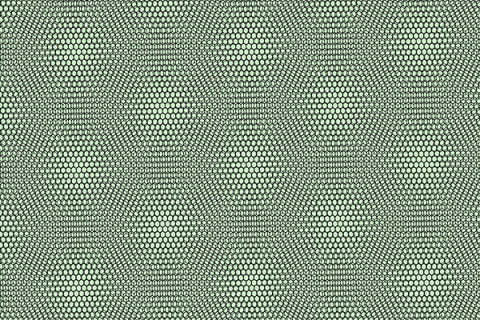Researchers discover the origin of one of the most intriguing phenomena in twisted bilayer graphene

Researchers from the Materials Science Institute of Madrid (ICMM - CSIC) have uncovered why electronic cascade systems form in twisted bilayer graphene. Their discovery, just published in the journal Nature Communications, challenges previous theories about this intriguing property of twisted bilayer graphene.
It was a little over five years ago when it was discovered that by rotating one layer of graphene with respect to another by just 1.1 degrees, this material gained new and surprising properties due to the interaction of its electrons: isolated and superconducting states were observed that were unexpected. Subsequently, dramatic changes in electron energy were found in the form of cascades. All these phenomena opened a new field of research, and these systems (seemingly simple, being based solely on carbon) exhibit a greater variety of electronic states than any other.
"In the initial interpretations of the cascades, it was believed that they were related to ordered states, such as magnetic states, which have been detected in the system at very low temperatures, around 5 Kelvin, but these cascades are much more resilient, surviving up to temperatures of tens of Kelvin [1 K is equivalent to -272.15ºC]," explains Leni Bascones, a researcher at ICMM and the study's main author. Their work demonstrates that the origin of this phenomenon is different.
Specifically, this study shows that the cascades are expected to appear without invoking any order. "We are not saying that there is no order in magic-angle bilayers, as it has been observed, but at lower temperatures," points out María José Calderón, a researcher at ICMM and also an author of the study.
The key to this research, which has essential implications for studying materials like unconventional superconductors, lies in the technique used for its theoretical description: the dynamic mean-field theory combined with Hartree calculations. "It's the most advanced numerical technique used so far to study the kind of effect we are looking for," Bascones highlights. "It's a very complex problem because many interacting electrons are present in solids, and collective behavior emerges. In other words, you can't trivially understand it as the sum of the behavior of individual electrons," emphasizes Calderón.
"When the properties of these rotated graphene bilayers began to be discovered, there was interest in seeing if it could be related to high-temperature superconductors," Bascones explains. Although initially it was thought that the phenomenology behind these materials did not apply to graphene bilayers, "we precisely say that the underlying origin of these cascades is related to the type of physics that occurs in other correlated systems," such as the mentioned superconductors. This could be crucial for understanding how these superconductors work, which in turn are essential for technological goals such as efficient energy transmission or quantum computers.
Referencia: A. Datta, M.J. Caldeón, A. Camjayi, E. Bascones: Heavy quasiparticles and cascades without symmetry breaking in twisted bilayer graphene. Nature Communications. DOI: 10.1038/s41467-023-40754-4
-- ICMM-CSIC Comunicación --
Instituto de Ciencia de Materiales de Madrid (ICMM)
Sor Juana Ines de la Cruz, 3
Cantoblanco, 28049
Madrid, España
Telephone: (+34) 91 334 90 00
Email: @email
Communication Office: @email

Acknowledge the Severo Ochoa Centres of Excellence program through Grant CEX2024-001445-S/ financiado por MICIU/AEI / 10.13039/501100011033

Contacto | Accesibilidad | Aviso legal | Política de Cookies | Protección de datos